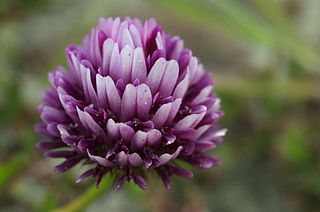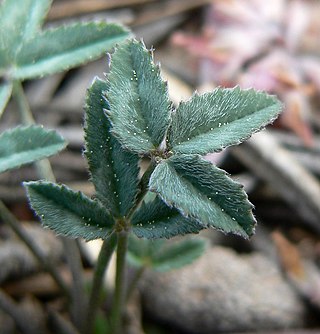
The Klamath Mountains are a rugged and lightly populated mountain range in northwestern California and southwestern Oregon in the western United States. As a mountain system within both the greater Pacific Coast Ranges and the California Coast Ranges, the Klamath Mountains have a varied geology, with substantial areas of serpentinite and marble, and a climate characterized by moderately cold winters with very heavy snowfall and warm, very dry summers with limited rainfall, especially in the south. As a consequence of the geology and soil types, the mountains harbor several endemic or near-endemic trees, forming one of the largest collections of conifers in the world. The mountains are also home to a diverse array of fish and animal species, including black bears, large cats, owls, eagles, and several species of Pacific salmon. Millions of acres in the mountains are managed by the United States Forest Service. The northernmost and largest sub-range of the Klamath Mountains are the Siskiyou Mountains.

Trifolium repens, the white clover, is a herbaceous perennial plant in the bean family Fabaceae. It is native to Europe, including the British Isles, and central Asia and is one of the most widely cultivated types of clover. It has been widely introduced worldwide as a forage crop, and is now also common in most grassy areas of North America, Australia and New Zealand. The species includes varieties often classed as small, intermediate and large, according to height, which reflects petiole length. The term 'white clover' is applied to the species in general, 'Dutch clover' is often applied to intermediate varieties, and 'ladino clover' is applied to large varieties.

The Siskiyou Mountains are a coastal subrange of the Klamath Mountains, and located in northwestern California and southwestern Oregon in the United States. They extend in an arc for approximately 100 miles (160 km) from east of Crescent City, California, northeast along the north side of the Klamath River into Josephine and Jackson counties in Oregon. The mountain range forms a barrier between the watersheds of the Klamath River to the south and the Rogue River to the north. Accordingly, much of the range is within the Rogue River – Siskiyou and Klamath national forests, and the Pacific Crest Trail follows a portion of the crest of the Siskiyous.

Cupressus bakeri, reclassified as Hesperocyparis bakeri, with the common names Baker cypress, Modoc cypress, or Siskiyou cypress, is a rare species of cypress tree endemic to a small area across far northern California and extreme southwestern Oregon, in the western United States.

Trifolium wormskioldii is a species of clover native to the western half of North America. Its common names include cows clover, coast clover, sand clover, seaside clover, springbank clover, and Wormskjold's clover.

Iris bracteata, with common name is Siskiyou iris, is a species of iris.

The Klamath Mountains ecoregion of Oregon and California lies inland and north of the Coast Range ecoregion, extending from the Umpqua River in the north to the Sacramento Valley in the south. It encompasses the highly dissected ridges, foothills, and valleys of the Klamath and Siskiyou Mountains. It corresponds to the Level III ecoregion designated by the Environmental Protection Agency and to the Klamath-Siskiyou forests ecoregion designated by the World Wide Fund for Nature.

Allium siskiyouense is a North American species of wild onion known by the common name Siskiyou onion. It is native to the Klamath Mountains and nearby ranges of northern California and Oregon. It grows in serpentine and other rocky soil types.
Arnica spathulata is a rare North American species of flowering plant in the family Asteraceae, known by the common name Klamath arnica. It is native to the Klamath Mountains of northwestern California and southwestern Oregon. It grows in woodland habitat, almost exclusively on serpentine soils.
Arnica viscosa is an uncommon North American species of flowering plant in the family Asteraceae, known by the common name Mount Shasta arnica.

The Marble Mountain Wilderness is a 241,744-acre (978.30 km2) wilderness area located 60 miles (97 km) southwest of Yreka, California, in the United States. It is managed by the United States Forest Service and is within the Klamath National Forest in Siskiyou County. The land was first set aside in April 1931 as the Marble Mountain Primitive Area, which comprised 234,957 acres (950.84 km2). It was one of four areas to gain primitive status under the Forest Service's L-20 regulations that year. In 1964, it became a federally designated wilderness area when the U.S. Congress passed the Wilderness Act.

Eriogonum siskiyouense is a rare species of wild buckwheat known by the common name Siskiyou buckwheat.
Trifolium andersonii is a species of clover known by the common names fiveleaf clover and Anderson's clover. It is native to the western United States, particularly the Great Basin and adjacent high mountain ranges, including the Sierra Nevada. It was named after Charles Lewis Anderson by Asa Gray.
Trifolium beckwithii is a species of clover known by the common name Beckwith's clover.
Trifolium bolanderi is a species of clover known by the common names Bolander's clover and parasol clover.
Trifolium breweri, which has the common names forest clover and Brewer's clover, is a perennial clover that is native to mixed evergreen forests and coastal coniferous forests in Southern Oregon and California.

Trifolium eriocephalum is a species of clover known by the common name woollyhead clover or hairy head clover.

Trifolium gymnocarpon is a species of clover known by the common name hollyleaf clover.
Trifolium jokerstii is a rare species of clover known by the common names Jim's clover and Butte County golden clover. It is endemic to Butte County, California, where it is known from eight or nine occurrences near Oroville. It grows in seasonally moist habitat, such as vernal pools, pastures, and ephemeral creeks. It was previously included within the description of Trifolium barbigerum as an odd yellow-flowered variant of a mostly purple-pink-flowered species, and was elevated to species status in 1998. It was named for the California botanist Jim Jokerst.
Eucephalus glabratus is a North American species of flowering plant in the family Asteraceae with the common names of smooth aster, smooth wayside-aster, and Siskiyou aster. It is a perennial herb up to 60 centimeters tall, with branching rhizomes. Stems and leaves are hairless or nearly so. One plant will usually produce 3–8 flower heads per stem. Each head has 0–4 violet ray florets surrounding numerous yellow disc florets.












